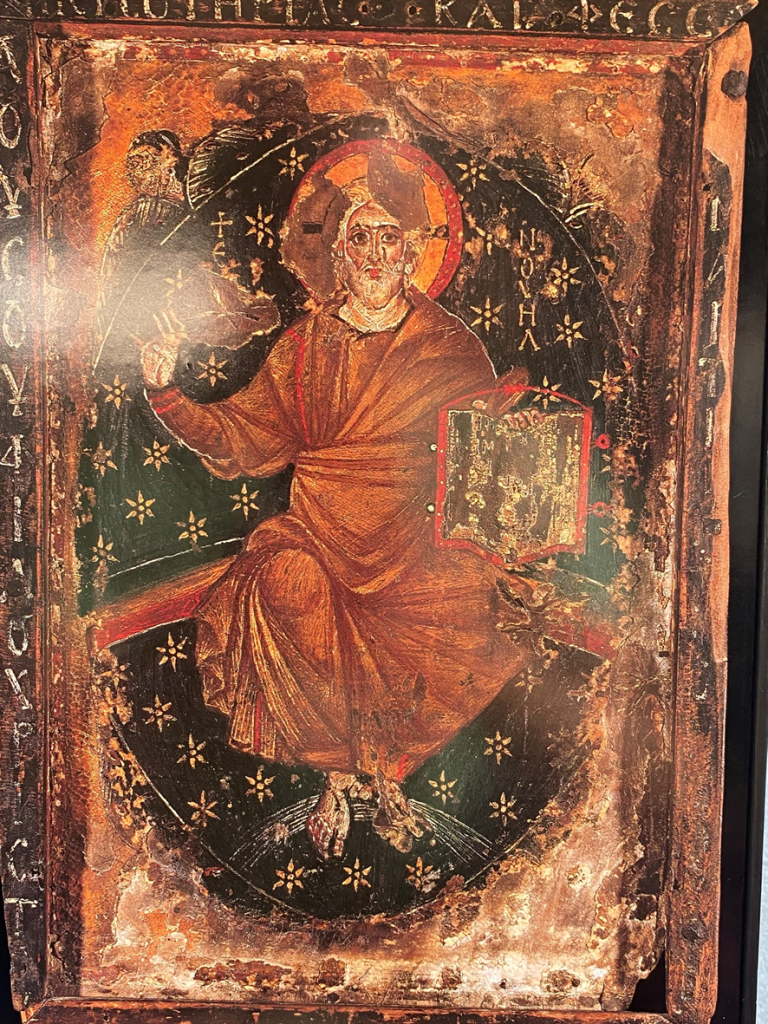

Jesus Cristo no trono – Monastério de Santa Catarina do Sinai – século VII
Cristo é identificado como Emanuel, o Verbo de Deus encarnado, conforme a inscrição; ele aparece sentado sobre um arco-íris, dentro de uma auréola sustentada pelos quatro anjos querubins do profeta Ezequiel (10,12).
A arte cristã primitiva e bizantina representava esse tipo iconográfico como um jovem imberbe, essencialmente um herói antigo. O ícone, de fato, mostra três representações de Cristo: os cabelos brancos sugerem o Ancião dos Dias, a postura Cristo Pantocrator e a inscrição o Senhor eternamente jovem. Desta forma, o Filho é consubstancial ao Pai. O ícone talvez tenha sido pintado no Egito e foi dedicado por um peregrino que escreveu seu apelo na fronteira.
Fonte: Sinai Treasures.
Christ on throne – seventh century
Christ is identified as Emmanuel, the Word of God incarnate, according to the inscription; he appears seated on a rainbow, inside a halo held up by the four cherub angels of the prophet Ezekiel (10:12).
Early Christian and Byzantine art depicted this iconographic type as a beardless young man, essentially an ancient hero. The icon, in fact, shows three representations of Christ: the white hair suggests the Ancient of Days, the posture Christ Pantocrator, and the inscription the eternally young Lord. In this manner the Son is consubstantial with the Father. The icon was perhaps painted in Egypt, and was dedicated by a pilgrim who wrote his appeal around the border.
Source: Sinai Treasures.
Produzido por / Organized by: MuMi – Museu Mítico

Consulte a Agenda do Museu a partir de 2025 e o visite quando receber sua confirmação de visita em seu email ou whatsapp.
Por se tratar de um museu particular, é necessário se cadastrar na Comunidade MuMi e customizar sua visita.
Criação e Tecnologia: Clayton Tenório @2025 MuMi – Museu Mítico